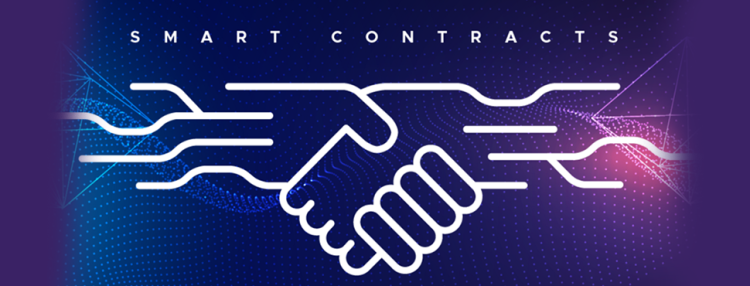Introduction
Smart contracts, the self-executing contracts with the terms directly written into code, have revolutionized the way transactions and agreements are made in the blockchain ecosystem. They offer unparalleled efficiency, transparency, and automation, removing the need for intermediaries and minimizing human error. However, despite their benefits, the rise of smart contracts has brought a new set of security risks. In recent years, several high-profile hacks and exploits have highlighted the vulnerabilities of these code-based contracts, resulting in significant financial losses.
The question now arises: Who is responsible when a smart contract fails or is exploited? Is it the developers who wrote the contract, the platform that deployed it, the users who interacted with it, or some combination of these parties? As smart contracts become more prevalent, the issue of liability becomes increasingly complex and critical.
In this article, we will examine the core security vulnerabilities of smart contracts, explore who should bear responsibility in the event of losses, and discuss the broader legal and ethical implications of smart contract security.
Section 1: Understanding Smart Contract Security Vulnerabilities
1.1 The Nature of Smart Contracts
Smart contracts are programmed to execute automatically when certain conditions are met. These conditions are written in code and run on blockchain platforms like Ethereum, Solana, or Cardano. Once deployed, the contract is immutable, meaning it cannot be altered or reversed. This immutability is a double-edged sword: while it ensures trust and reliability, it also means that any vulnerability or bug in the code cannot be easily fixed.
Some common security issues in smart contracts include:
- Reentrancy Attacks: One of the most infamous vulnerabilities is the reentrancy attack, which occurs when a smart contract calls another contract (or itself) before the initial operation is completed. This can allow attackers to exploit the contract and drain funds, as was seen in the DAO hack on Ethereum in 2016.
- Integer Overflow/Underflow: This happens when arithmetic operations produce a value that exceeds the storage capacity, causing unexpected behavior, such as accidentally allowing users to withdraw more funds than they should.
- Untrusted Oracles: Smart contracts often rely on external data sources, or oracles, to make decisions (e.g., the price of a cryptocurrency or stock). If the oracle provides inaccurate data, the contract’s logic may fail or be exploited.
- Access Control Issues: Incorrect permissions or improper management of privileged accounts can allow unauthorized parties to access or modify sensitive data, resulting in financial loss or malicious alterations.
- Gas Limit Exploits: In blockchain environments like Ethereum, gas is required to execute transactions. If the gas limit is improperly set, an attacker can exploit the contract by running out the available gas, preventing certain functions from executing correctly.
These vulnerabilities have led to serious financial losses in several cases, sparking debates about responsibility and accountability.
1.2 Notable Smart Contract Exploits
- The DAO Hack (2016): The most infamous exploit in Ethereum’s history, where a vulnerability in the DAO’s smart contract allowed attackers to drain $50 million worth of Ether. This incident led to a hard fork of the Ethereum blockchain to reverse the damage and return the stolen funds.
- Parity Wallet Vulnerability (2017): A vulnerability in the Parity Wallet smart contract allowed an attacker to lock up $150 million worth of Ether by exploiting a bug that left the wallet’s owner contract vulnerable to hijacking.
- bZx Protocol Attack (2020): A flash loan attack exploited vulnerabilities in the bZx decentralized finance (DeFi) protocol’s smart contracts, resulting in losses of over $8 million. The attack took advantage of the protocol’s reliance on external data from oracles, which were manipulated to cause price discrepancies.
These incidents underscore the need for clear lines of responsibility when smart contracts fail or are exploited.
Section 2: Identifying Responsibility in the Event of Losses
2.1 Developer Responsibility
One of the first parties that come to mind when discussing responsibility for smart contract security is the developer. Developers are responsible for writing the code that defines the smart contract’s behavior. In cases of vulnerabilities or exploits, the question arises: Did the developer fail to follow best practices, or was the vulnerability due to an unforeseen edge case?
- Code Audits and Best Practices: Developers are expected to conduct thorough code audits and adhere to best practices for smart contract development. This includes writing secure code, using libraries like OpenZeppelin for standardized implementations, and using formal verification techniques to ensure the correctness of the contract logic.
- Testing and Simulation: Many smart contracts are deployed without adequate testing in a testnet environment, or they are deployed with incomplete simulations. This oversight can lead to vulnerabilities being discovered only after the contract goes live, which can be disastrous.
- Legal Liabilities: From a legal standpoint, developers could be held accountable for gross negligence if they fail to follow proper security protocols or deploy code that they know (or should have known) contains security flaws.
2.2 Platform Responsibility
The platform on which the smart contract is deployed, such as Ethereum, Solana, or Binance Smart Chain, is another potential source of responsibility. While the platform itself is not directly responsible for the contract’s code, it plays a critical role in facilitating its deployment and execution. The platform could be seen as a gatekeeper for ensuring that smart contracts meet certain security standards before going live.
- Due Diligence: Should platforms perform due diligence on the smart contracts that are deployed on their blockchain? Currently, blockchain platforms typically do not perform audits on individual contracts. However, some platforms, such as Polkadot and Tezos, have taken steps toward creating more secure ecosystems by encouraging or requiring third-party audits before deployment.
- Platform-Specific Issues: Certain vulnerabilities could be linked to platform-specific bugs or issues in the underlying blockchain. For instance, Ethereum’s gas limitations have caused issues in several smart contract exploits. If these issues are due to flaws within the blockchain network itself, there may be a case for the platform to take responsibility.
2.3 User Responsibility
Users who interact with smart contracts must also assume some responsibility. In most cases, users are expected to exercise due diligence before interacting with any contract. This includes researching the contract’s security, understanding its functionality, and ensuring they are interacting with the correct version of the contract.
- Informed Consent: Users are often presented with a set of permissions or terms before interacting with a smart contract. If users willingly interact with a contract without fully understanding the risks (such as financial loss or the possibility of bugs), they may be held partially responsible.
- Reputation and Trust: Many users trust smart contracts because they are backed by the reputation of developers or organizations, yet this trust can be misplaced. For example, decentralized finance (DeFi) protocols often lack adequate user education, and the unaudited or unverified nature of some smart contracts can leave users exposed to high levels of risk.
2.4 Insurance and Risk Mitigation
As the smart contract ecosystem matures, some platforms have introduced insurance and risk mitigation options. For example, decentralized insurance protocols like Nexus Mutual and Cover Protocol allow users to buy coverage against smart contract exploits. These platforms provide a safety net in case of a hack or failure, but they also raise questions about who should be liable for covering these losses.
In the case of insurance, the following questions arise:
- Should developers be required to purchase insurance for their contracts before deployment?
- How can insurance protocols ensure that they are offering adequate protection without becoming a source of moral hazard?
- Can insurance policies serve as an acceptable form of liability transfer in the event of smart contract failures?

Section 3: Legal and Ethical Considerations
3.1 Legal Framework for Smart Contract Liability
The legal landscape for smart contract liability is still in its infancy, with many jurisdictions struggling to define how traditional law applies to decentralized systems. Since smart contracts are code-based and executed on decentralized blockchains, assigning liability for smart contract failures is far from straightforward.
- Contract Law: In traditional contract law, parties are liable for the terms and conditions of an agreement. In the case of smart contracts, the question arises: who are the parties, and how can they be held accountable when the code is immutable, and there is no central entity?
- Jurisdictional Issues: Smart contracts are deployed across global decentralized networks. This creates complications when it comes to jurisdiction and enforcing legal accountability. For example, if a user in the U.S. suffers a loss from a smart contract vulnerability deployed on a blockchain, which legal system should apply?
- Consumer Protection: Some have argued that there should be regulatory frameworks in place to protect users from financial losses due to poorly written or vulnerable smart contracts. This could include requiring auditing or mandatory disclosures about the risks associated with interacting with certain contracts.
3.2 Ethical Responsibility
From an ethical perspective, the developers, platforms, and users all have a role to play in ensuring that smart contracts are as secure and transparent as possible. While the decentralized nature of the blockchain removes traditional intermediaries, it also creates new ethical questions about responsibility and accountability in the event of a failure.
- Transparency: Developers have an ethical responsibility to disclose known risks and potential vulnerabilities in their smart contracts. Users should also take an active role in understanding the risks before interacting with these contracts.
- Accountability in a Decentralized System: In decentralized systems, the notion of accountability becomes less clear-cut. It is essential to create a framework that ensures that the ecosystem works in a way that minimizes harm to all parties involved.
Conclusion
As the adoption of smart contracts continues to grow, it is clear that the issue of liability and responsibility in the event of a security breach or vulnerability exploit is a complex and evolving challenge. While developers, platforms, and users each have roles to play, the responsibility for smart contract failures cannot be easily assigned to a single party. A multifaceted approach—one that includes strong security practices, audits, user education, and legal frameworks—is necessary to minimize risks and ensure accountability.
Ultimately, the success of smart contracts depends on the collective effort of all parties involved, and it is essential that the blockchain ecosystem develops clear guidelines and standards for managing the risks associated with these transformative technologies. As the technology matures, so too should the systems of responsibility and compensation in the event of failures.
















































